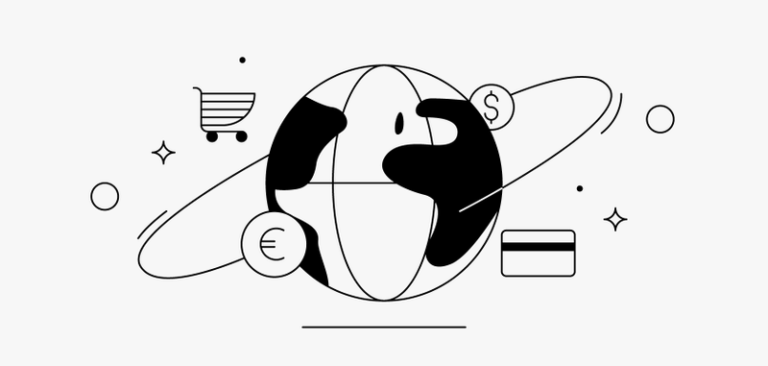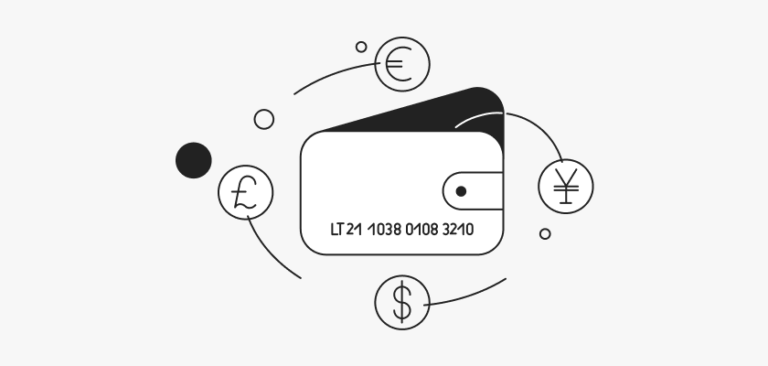You’ve likely seen the recurring payment model used in all kinds of businesses, but have you considered how they could transform your own? Recurring payments aren’t just a way to automate the payment process – they can streamline operations, increase profitability, and elevate customer experiences.
In this guide, we discuss what recurring payments are, how recurring payments work, and what kind of businesses use recurring payments. We also explore the benefits of recurring payments, how to start using them in your business, and success strategies.
What is a recurring payment?
A recurring payment is a type of payment arrangement where funds are automatically withdrawn from a customer’s credit card or bank account at regular intervals. Merchants who adopt this payment arrangement use a ‘card-on-file’ system to store a customer’s payment information with their consent and withdraw funds when they are due.
While recurring payments aren’t anything new, they’ve become widely adopted across various industries in the last few years. This is likely due to their convenience, ease-of-use, and benefits for both businesses and customers alike.
There are two types of recurring payments:
- Fixed recurring payments: This is when customers are charged the same amount for each billing cycle. You’ll see fixed recurring payments for subscription businesses, such as gym memberships or streaming platforms.
- Variable payments: This is when a recurring payment changes depending on how much of a product/service a customer has consumed. You’ll see variable payments with utilities companies or SaaS subscriptions that use a pay-as-you-go pricing model.
How do recurring payments work?
The beauty of recurring payments is their streamlined, repetitive nature that makes payment easier for both customers and businesses. Here’s a step-by-step breakdown of how recurring payments work.
- Customer initiates a subscription: A customer opts in for recurring payments by providing their payment details and consenting to the subscription terms. This sets the wheels in motion for the automated billing process.
- Billing cycle begins: Next, the billing cycle kicks off. The company receives payments into their merchant account via secure payment gateways. Funds flow from the customer’s account to the company’s, where the revenue is marked as received and processed through accounting channels.
- Customer is notified: The company sends billing details to the customer via email or other designated channels and issues invoices or receipts. This transparency keeps customers informed about their transactions.
- Repeat: The billing cycle repeats unless canceled by the customer or an issue arises, such as credit card failure.
Which businesses use recurring payments?
Recurring payments are used by numerous businesses across a diverse range of industries. These include:
- Streaming services: Subscription-based music and video streaming services, such as Netflix and Spotify, use recurring payments to automatically bill customers while their subscription is active.
- Education platforms: Online learning platforms and providers, such as Skillshare, often use recurring payments to charge their course fees and subscriptions.
- Telecommunications: Monthly or quarterly recurring payments are used by phone and internet service providers.
- Utilities: Gas, electricity, water, and other utility providers offer recurring payment payment options for regular billing cycles.
- Retail and e-commerce: Some retail businesses offer subscription-based models that use recurring payments for regular product delivery. For example, customers might have toilet paper or fruit and vegetable boxes delivered on a regular basis.
- Memberships: Museums, clubs, and professional associations often rely on recurring payments to collect membership dues and contributions. These could be made monthly, quarterly, or annually.
- Charitable organizations: Many charities use recurring payments to collect ongoing donations from people who want to contribute to their cause on a regular basis.
- Software and apps: Companies that offer software as a service (SaaS), mobile apps, and cloud storage services use recurring payments for continued access. These include things like iCloud or Canva.
- Health and wellness providers: Gyms, yoga studios, and health insurance providers usually have recurring payment structures.
- Entertainment and events: Theaters and amusement parks sometimes offer seasonal passes or event subscriptions with recurring payment options.
Benefits of recurring payments for merchants
Offering recurring payment options can be a game-changer for businesses, bringing not just a reliable revenue stream but also streamlined operations and improved customer satisfaction. Let’s dive into the many benefits of the recurring payment model below.
Steady cash flow
Recurring payments bring an element of financial predictability that allows businesses to better manage their cash flow. By relying on regular payments at specific intervals, companies can more accurately forecast sales and conversions and make informed decisions for the future.
Enhanced customer experience
Offering hassle-free recurring payment plans helps businesses create a more seamless experience for customers by:
- Saving time and effort: Automated recurring payments save customers the time and effort of re-entering their payment details and remembering payment due dates.
- Aiding budgeting: Customers are better able to budget their expenses when they can expect regular payments to come in. It also provides transparency and makes payments an effortless part of their routine.
- Uninterrupted service: The convenience of recurring payments allows customers to enjoy uninterrupted access to a business’s products or services. This in turn enhances their experience and helps build brand loyalty.
No more late payments
When payments are made automatically, every transaction is sure to be paid on time. This not only relieves customers from the burden of remembering to pay their bills, but also means companies can reduce or eliminate all instances of late or missed payments.
Save time and resources
Automation ultimately leads to reduced overheads and the freeing up of resources within a business. When the billing and collection process is automated, time and effort spent on manual invoicing and follow-ups can be redirected to other business activities.
With this newfound efficiency, teams within a company can instead focus on growth-driving and strategic initiatives such as improving financial solutions, expanding customer bases, and surpassing subscription benchmarks. This not only increases productivity but also profitability within a business.
Better data security
One side effect of automatic payments is improved data security. To accept recurring payments, companies will have to switch to a reliable payment provider, such as ZEN. This means that each transaction will adhere to industry standards and compliance regulations like Payment Card Industry Data Security Standard (PCI DSS).
The result is enhanced payment data security that safeguards sensitive customer information through encryption and secure gateways. This reduces the risk of data exposure and human errors made during manual entries.
Higher growth potential
As a business’s customer base expands, introducing recurring payments helps establish a consistent revenue stream that allows for accurate forecasting and resource allocation. This allows businesses to confidently invest in growth initiatives like product development, marketing, and expansion strategies while knowing that there’s predictable and stable revenue that can support these activities.
How to add recurring payments to your business
If you’re thinking of introducing recurring payments to your business model, welcome to the future. Below are a series of steps you can take to thoughtfully consider how to add recurring payments to your business:
- Assess business needs: Start by assessing if recurring payments are feasible and align with your business model. Things to consider are your products/services, customer demand, pricing structure, and frequency of repeat purchases.
- Choose a reliable payment provider: If you’re confident that recurring payments work with your business structure, start looking for a reliable and secure payment provider like ZEN. You want to choose a provider that can integrate seamlessly with various software, offers secure and scalable solutions, and provides a seamless customer experience.
- Configure payment settings: When you’ve set up your payment provider, access the payment gateway settings to tailor your recurring payment options. Set parameters like frequency, amount, and duration of recurring charges to align with your offerings and customer preferences.
- Secure customer consent: Before you start enrolling customers in recurring payments, be sure to get their explicit consent. Clearly communicate the payment terms, billing intervals, and cancellation policies associated with the agreement to ensure transparency and compliance.
- Continuous improvement: You’re all set up but the work doesn’t stop here! Continue to monitor your recurring payment system and keep track of successful or failed transactions. It’s also worth gathering customer feedback and analyzing it to spot how you can improve the payment process.
Success strategies for recurring payments
To make recurring payments work for your benefit, we’ve outlined a few success strategies below. Follow these tips to minimize friction and maximize success with recurring payments.
Simplify the payment process
It’s important that you streamline the online payment process to make it effortless for customers. Provide clear instructions and an easy checkout experience with minimal steps. Be clear about which payment methods you accept to avoid deterring potential customers.
Provide diverse payment options
Every customer is different, and you want to cater to the diverse range of preferences by offering multiple payment methods beyond just credit cards. Include options like direct debit, digital wallets, and maybe even emerging alternatives like cryptocurrency.
Offer tiered payment plans
Another way to cater to varied customer preferences and budgets is to offer tiered payment plans. Give customers the option to choose between monthly plans at a higher rate and annual plans at a reduced rate. This way, they can choose the recurring payment method that suits them best, enhancing satisfaction and commitment in the long run.
Maintain transparent communication
Communication and transparency is essential when it comes to recurring payments. Keep customers updated on the products and services they’re using. This fosters better connections and instills a sense of ownership that can strengthen customer loyalty.
Proactive management
To avoid payment errors and outdated information, take proactive measures to update customers on credit card expiry dates and other potential issues. Taking action early on can mitigate future obstacles and keep the payment process smooth for all parties involved.
Recurring payment FAQs
Got any other questions about recurring payments? We’ve answered some of the most common queries below.
What are some examples of recurring payments?
Common examples are subscription payments for things like Netflix, gym memberships, magazines, and subscription boxes for groceries.
How does a one-time payment differ from a recurring payment?
One-time payments are not scheduled, happen sporadically, and are usually made manually. On the other hand, recurring payments are automated, scheduled for periodic intervals, and processed through payment software.
What are the benefits of recurring payments for businesses?
Recurring payments streamline the payment collection process, reducing time and effort required to collect payments. They provide predictable, stable revenue and make it more convenient for customers to renew subscriptions.
How do I set up recurring payments for my business?
To set up recurring payments, start by choosing a reliable payment provider that supports recurring billing, like ZEN.COM. Once you’ve set up, configure your payment settings for things like frequency and duration of charges. Make sure you obtain explicit consent from your customers and clearly communicate terms and cancellation policies before you start.
How can I handle changes in payment information for recurring customers?
Good payment processing services include features that automatically update payment details. This can help avoid errors caused by outdated information.
How do recurring payments benefit customers?
Recurring payments don’t just benefit businesses. They enhance the customer experience by offering convenience and uninterrupted access to services or products without the hassle of manual payments.
Start using recurring payments with ZEN
If you’re not already using recurring payments, it’s time to discover their potential for your business. At ZEN, we make the transition to recurring payments easy and seamless for both your company and your customers.
Get in touch with our team and learn how to start recurring payments with ZEN’s hassle-free, secure, and transparent transaction experience.



